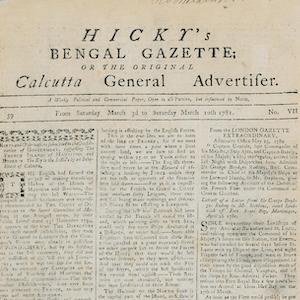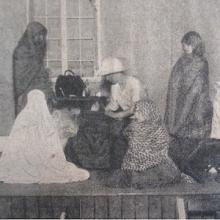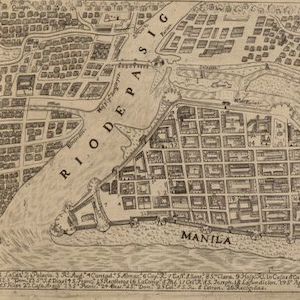Europe

Hicky's Bengal Gazette
Hicky’s Bengal Gazette was the first printed newspaper to be published in India.

Cartoon Depicts Debate at Hasting's Impeachment Trial, 1788
Printed in London in 1788, this satirical print was a response to the debate unleashed by the impeachment trial of Warren Hastings, the former and first Governor General of India, as well as the impeachment proceedings initiated against Elijah Impey, the former and first Chief Justice of the Supr

Cartoon Mocking British Policy toward India, 1788
This satirical print from 1788 constituted a cartoonist’s effort to make sense of and criticize growing governmental control over territories in South Asia.

Photograph of “Indian Tableaux at Endon”
This photograph, which was originally published in the G.F.S. Magazine in September 1923, is from a tableau performed by members of the Girls’ Friendly Society (GFS), which was a youth organization akin to the more popular Girl Guides.

Long Teaching Module: Exploring Empire through the Lens of Childhood and Gender
As European empires expanded at the end of the end of the nineteenth century, imperialism came to permeate everyday life and had a pervasive influence on childhood, shaping everything from education to sports and literature.

"The Problems of Third World Development"
The text is an excerpt from the 1974 Houari Boumédiène’s speech to t
Statute of the International Criminal Tribunal for the former Yugoslavia
Established by United Nations resolution 827 of May 25th, 1993, the International Criminal Tribunal for the former Yugoslavia (ICTY) was a body with the purpose of prosecuting war crimes committed during the Yugoslav Wars and had jurisdiction over four groups of criminal activity committed since

Map of the Philippines, 1734
The city of Manila is a perfect place to think about the importance of cities to world history.

Foundations: Research and Sponsorship
The Brazilian intellectual Paulo Duarte wrote Tracy Kittredge of the Social Science Division of the Rockefeller Foundation in 1941.
The Miracles of Sainte Foy, Bernard of Angers, c. 1013–1020
In 1013, Bernard of Angers visited the relics of Sainte Foy at the abbey of Conques, in southern France. Initially skeptical of the cult which had formed around this little girl martyr, Bernard nonetheless fell under her spell.